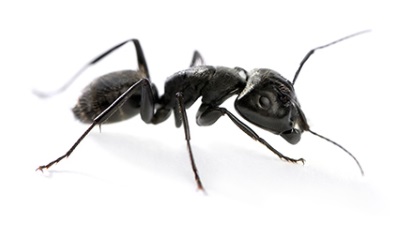Pest Control Chicago Fundamentals Explained
Table of ContentsExamine This Report on Pest Control Chicago5 Simple Techniques For Pest Control ChicagoEverything about Pest Control ChicagoGetting The Pest Control Chicago To WorkPest Control Chicago - An OverviewThe Buzz on Pest Control Chicago
Growing or gathering a crop prior to (or after) a bug is present reduces bug damage by avoidance. Trapping and determining a pest's expanding level days can assist with intending around a parasite's lifecycle. Damages resistance can often be attained by growing a crop early to make sure that the plants are stronger, much more resistant, and much more tolerant to damages by the time insect parasites exist.
By creating a small, regulated area that the pests prefer, it is feasible to divert pests far from the primary plant. Two techniques for this are catch chopping and strip harvesting. is planting a recommended host plant of an insect bug near the key crop that is to be protected.
If required, the insects can then be eliminated in the catch crop. Trap plants can be any type of types that the insect preferseven be the same varieties as the primary plant - Insect control services Chicago. If the trap plant coincides varieties as the main plant, it needs to be grown at once that will best tempt the bug away from the key plant
Some Ideas on Pest Control Chicago You Need To Know
 This practice works when collecting a catch plant because it keeps some environment for the parasite. Because of this, the bug does stagnate to locate new habitat in a nearby higher worth or more susceptible plant. http://www.askmap.net/location/7065934/united-states/pest-control-chicago. The strategies already mentioned concentrate on decreasing crop direct exposure to insect pests, yet it is likewise possible to lower return loss even when insect damages occurs
This practice works when collecting a catch plant because it keeps some environment for the parasite. Because of this, the bug does stagnate to locate new habitat in a nearby higher worth or more susceptible plant. http://www.askmap.net/location/7065934/united-states/pest-control-chicago. The strategies already mentioned concentrate on decreasing crop direct exposure to insect pests, yet it is likewise possible to lower return loss even when insect damages occursTo practice IPM in the landscape, pick plants that are well fit to the site. Plant them correctly and keep the plants healthy and balanced by meticulously sprinkling, fertilizing, and trimming them. Look out for problems on your plants as they emerge. If a parasite or illness causes unacceptable damages despite preventative efforts, choose an effective management method that will have the least quantity of influence on various other living animals and the atmosphere.
5 Simple Techniques For Pest Control Chicago
 Look for signs and symptoms the plant displays as an outcome of parasite activity. Analyze your plants usually. Recognize your plants to be certain that the twisted leaves, unusual coloration, or strange-looking frameworks you see are not a normal part of the plant. Attempt to rule out site-related troubles by making certain that the dirt type, drainage problems, fertility level, and various other ecological problems are positive for the plant.
Look for signs and symptoms the plant displays as an outcome of parasite activity. Analyze your plants usually. Recognize your plants to be certain that the twisted leaves, unusual coloration, or strange-looking frameworks you see are not a normal part of the plant. Attempt to rule out site-related troubles by making certain that the dirt type, drainage problems, fertility level, and various other ecological problems are positive for the plant.Pests and mites often are related to specific plants, and they comply with particular advancement and actions patterns as the season advances. Usage recommendation publications from the library or garden facility to identify bugs. If you can't discover a precise description there, consult somebody in your local expansion workplace. Discover the pest's life cycle, habits, and all-natural enemies.
If so, an application of a nonselective pesticide can eliminate them, allowing the pest population to rebound spontaneous by killers and bloodsuckers, which might have been providing significant control. If a control is required, take into consideration physical or biorational techniques initially. If they are inaccessible or impractical, you may require to very carefully make use of a standard chemical control.
Pest Control Chicago for Dummies
 As an example, some aphids and termites can be ripped off by spraying the plant with water. Bagworm larvae can be picked off a ravaged plant. You can use traps to catch certain pests, and obstacles to protect plants from insect strike or condition infection. One reliable technique for managing gypsy moth larvae on handful of trees is to place a band of folded up cloth around the tree trunk to give a synthetic relaxing website for the caterpillars, and after that damage the caterpillars that collect there.
As an example, some aphids and termites can be ripped off by spraying the plant with water. Bagworm larvae can be picked off a ravaged plant. You can use traps to catch certain pests, and obstacles to protect plants from insect strike or condition infection. One reliable technique for managing gypsy moth larvae on handful of trees is to place a band of folded up cloth around the tree trunk to give a synthetic relaxing website for the caterpillars, and after that damage the caterpillars that collect there.In some cases, the finest service might be physically getting rid of the plant and replacing it with one that will not be impacted by the parasite or illness. The first team consists of living microorganisms that can kill the bug.
Bloodsuckers survive and frequently kill one more organism, called the host. Some parasitic wasps use caterpillars, whiteflies, aphids, and soft scales as hosts. An instance of an approach that makes use of a normally taking place biochemical is the germs Bacillus thuringiensis (Bt). Bt consists of a healthy protein that is dangerous to specific pests, yet safe to various other microorganisms.
See This Report about Pest Control Chicago
When the delicate insect bug eats the splashed fallen leaves, it will certainly consume the protein and be eliminated. Conventional chemicals are made use of only as a last resource in an IPM program, however in some cases are the most reliable methods of control. To have the biggest effect, these products need to his response be applied on a details part of the plant when the pest is most at risk.
In lots of situations, environmentally secure pesticides such as gardening oil or insecticidal soap work choices - http://peterjackson.mee.nu/do_you_ever_have_a_dream#c2203. Again, applications must be timed thoroughly to have the biggest impact on the pest insect populace. Since they have no residual task after they have dried, soaps and oils are usually the alternative that is the least disruptive to populaces of helpful microorganisms
These words, from the very least toxic to most hazardous are: "caution," "caution," and "danger." Make use of these words as guidelines to aid you pick the least dangerous material amongst the efficient alternatives. For the majority of landscape insects, you require to think about pesticides in just the first two groups. Some chemical solutions can be applied only by applicators with unique training and that are accredited by the state's division of agriculture.
The Buzz on Pest Control Chicago
Describe the Woody Ornamental Bug, Mite, and Illness Management Guide, published by Penn State Extension, or to one more current recommendation for a listing of materials that are registered for use on plants in your state. Read the label to ensure that you have actually chosen a product that works against the pest you have identified, and select your timing based on expert suggestions.